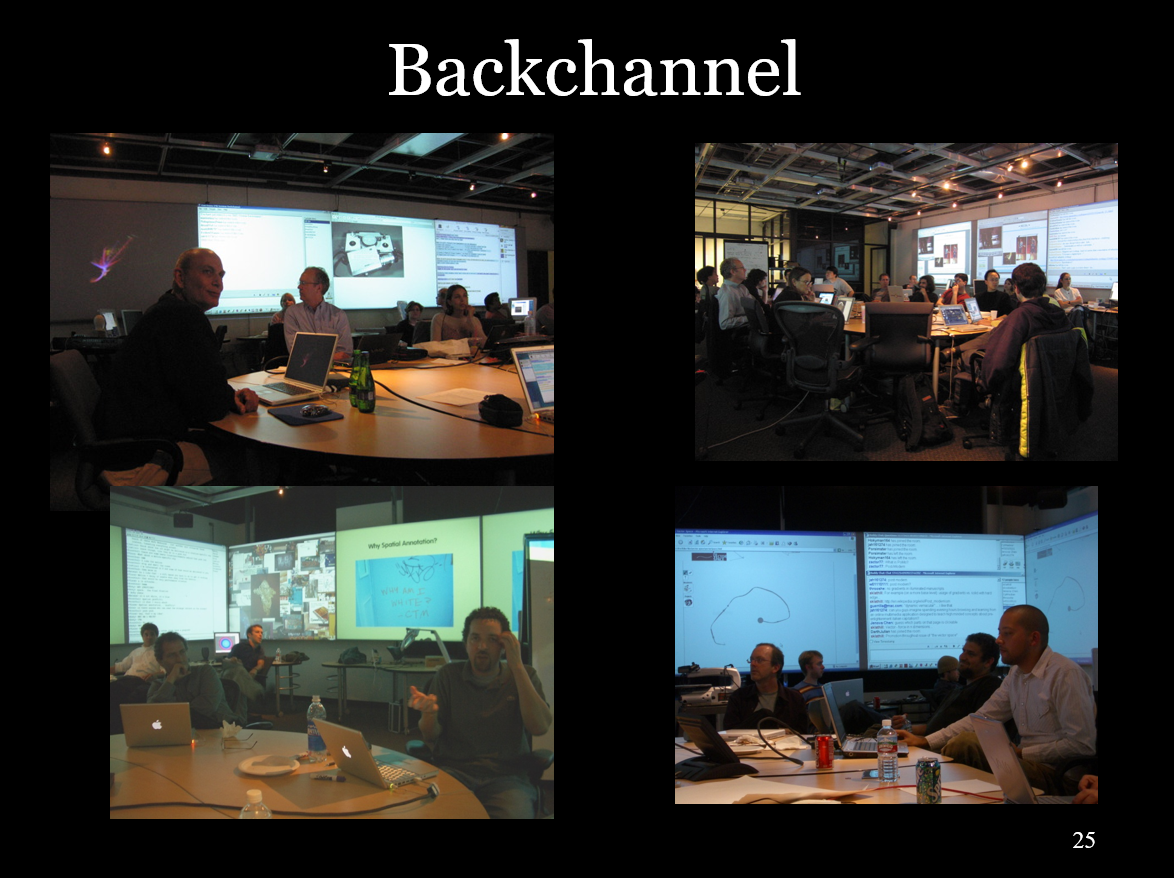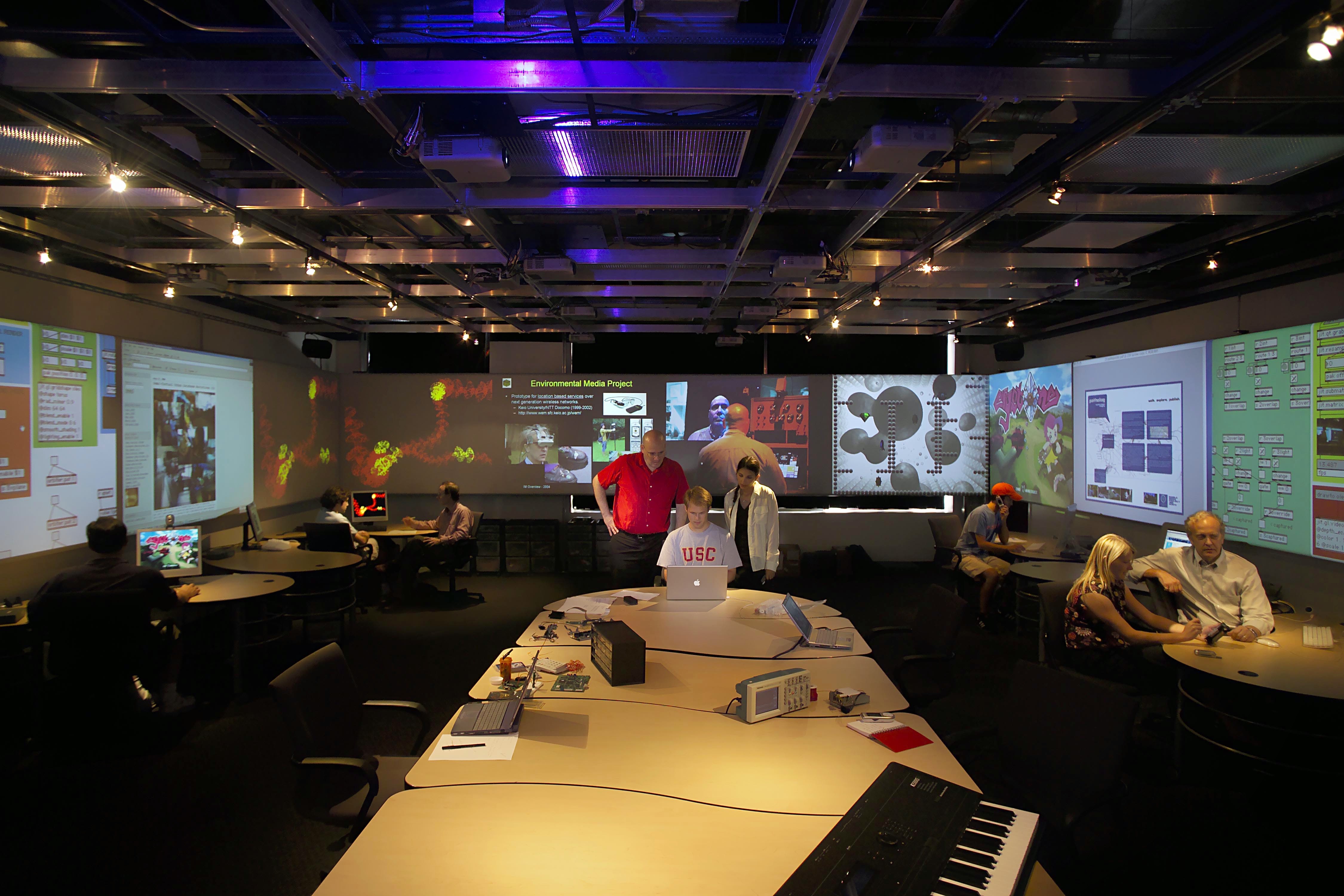
Backchannel (2004-2007)
From 2004 to 2007, we experimented to find ways networked communication could augment and amplify the content of classroom education, promoting collaborative processing and retention. In this paper we describe particular experiments we performed in our “Zemeckis Media Lab”: fourteen screens and projectors in a horse-shoe shape where students and faculty can share multiple data feeds. Laptops and desktop computers in the room can send visual information to the group. Wireless connections enable free-flowing internet access and communication.

Using a mixture of chat clients, image sharing software and web browsers, we have discovered a number of opportunities and pitfalls surrounding collaborative, communicative backchannel learning situations. We experimented with various software and social protocols. We adjusted levels of control over visuals between audience and presenters. We are developing a paper that will explore our experience with these experiments in technology-aided real-time knowledge sharing; we have a wildly imperfect social-technology context around us, and work to do informed by what we’ve seen.

Project Date: 2004-2007
Funding:
- Annenberg Center for Communication
- Interactive Media Division
Team:
- Justin Hall
- Marientina Gotsis
Advisors:
- Scott Fisher
- Publication:
Justin A. Hall, Scott S. Fisher. Experiments in Backchannel: Collaborative Presentations Using Social Software, Google Jockeys, and Immersive Environments. CHI 2006, April 22–27, 2006, Montreal, Canada. (PDF)